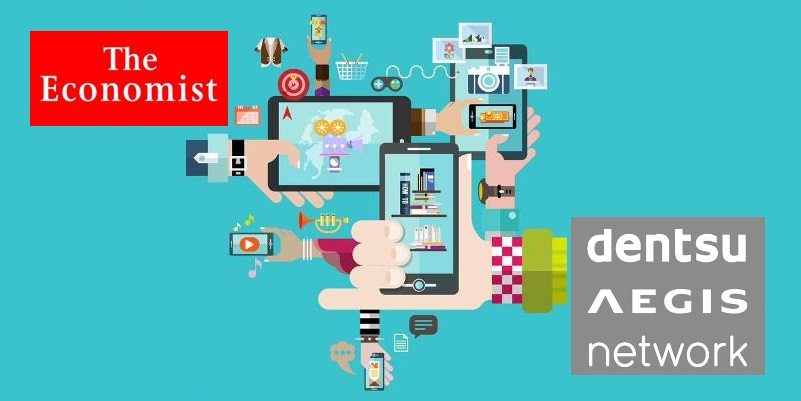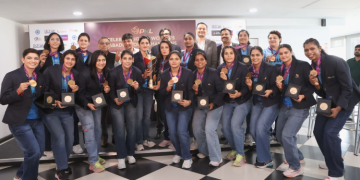The head of digital for Malaysian telco giant Axiata has said in a white paper on how technology is driving consumer engagement in Asia that old relationships between clients, agencies and legacy media owners are holding the industry back from embracing mobile in marketing.
Khairil Abdullah, the former group CMO of Axiata, and now CEO of digital services, said in a Dentsu Aegis and The Economist report released last week that the media buying system is “stuck” in an old model that is slowing the shift to where consumers are now spending most of their time.
“Marketing dollars are still heavily skewed towards old media even though media-viewing habits have changed,” he said.
“The problem is that the whole media-buying ecosystem is stuck in an old model, where marketing directors have long-term relationships with their agencies and the agencies have long-term relationships with traditional media. It’s hard to break those old bonds.”
In a 24-page paper that charts the rise of mobile, social and e-commerce in the region, Michelle Guthrie, Asia MD, agencies, for Google, also pointed out that mobile was not getting the attention from advertisers that it deserves.
“If you look at where people are consuming media, it isn’t on TV anymore, particularly if you look at anyone under the age of 25. Yet 40-50 per cent of advertising spend is still going to traditional TV channels, so there’s a big mismatch,” she said.
Dan Neary, Asia boss of the world’s largest social network, said that any brand now working with Facebook is by definition a mobile marketer.
“By definition, if you work with Facebook, you are a mobile marketer. If you’re building content for Facebook news feed, you’re building for mobile,” Neary said, adding that 90 per cent of Facebook users in Asia access the platform through their mobile devices.
In the first quarter of 2015, 73 per cent of Facebook’s ad revenue came from mobile, up from 59 per cent in the first quarter of 2014, Neary shared.
The rise of mobile means a fundamental shift in consumer behaviour, Anthony Ho, marketing director, media, Greater China for Mondelez International, said in the report.
“As consumers embrace mobile, they change,” said Ho. “They become much less passive consumers of content and much more interactive. We have to understand that and change our content accordingly.”
However, Neary pointed out that despite the disruption technology is reaping on marketing, some principles have remained unchanged.
“Creative used to be king, but when marketing first went digital and it was mostly about search, you’d hear people argue that creative wasn’t so important, it was just about algorithms,” he said, adding that those views are now off the market.
“Technology should enable better creative, not replace it. Storytelling is critical. Technology offers huge scale, but even at scale, great creative feels personal. We believe creativity is truly king again,” Neary said.
The content that people are sharing is becoming much more visual and much less text-based, he added. “Video, along with mobile, is the most important trend re-shaping the world of marketing. It’s a powerful format for storytelling and brand-building.”
Google’s Guthrie shared Neary’s view, to a point.
“The form of the video has to be appropriate. In the past it was all about the 30-second TV commercial. But that doesn’t translate well to the online world. Marketing agencies need to change how they think. It’s no longer about advertising, it’s about creating content that people want to watch and share with each other.”
“Companies need to develop specific content plans, with a content plan for YouTube, a content plan for Facebook, a content plan for Twitter and so on,” she said.
The report suggests that the marketing profession has seen more change in the past five years than in the previous 50, and Asia is becoming the place where companies are working out how to future-proof their businesses.
The study finds that while in 2014 Asia had 3.3 billion mobile phone subscriptions, or almost one for every man, woman and child, by 2019, the region is expected to have 4.3 billion mobile subscriptions, or 117 for every 100 people, as more people come online in countries such as Myanmar, India and Indonesia.
The drop in price of smartphones, which now cost on average 30 per cent less than they did in 2008, has helped drive penetration, which in turn has changed the profile of internet users in Asia from young and urban to older and more rural.
The rise in smartphone adoption has driven the rise in social media use in APAC. Australia is the biggest country in APAC for social media use per person, followed by China, according to the report.
Facebook’s Neary shared that Asia is the social network’s fastest growing market, with 50 per cent growth year on year, and 471m active users in the first quarter of 2015 – a number that doesn’t include China, where the service has limited availability.
But in some key markets, social media penetration remains low. In India, only eight per cent of the population used social media at the end of 2014, although that figure is set to change with the rise of mobile, the study predicted.
E-commerce is a sector where Asia has the most potential, led by China, the report suggests.
“In the past, it used to be the case in big markets like China, India and Indonesia that if your brand owned the distributor relationships you were king. But that’s not true anymore,” said Achyut Kasireddy, vice president, consumer brands, Greater China for dairy giant Fonterra.
“E-commerce means you no longer have to control the distribution. New entrants can quickly undermine the position of strength of the established players.”
To read the report in full, click here.





















